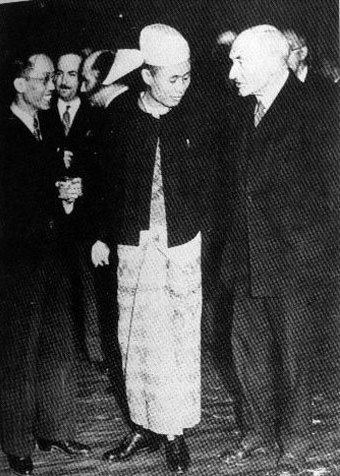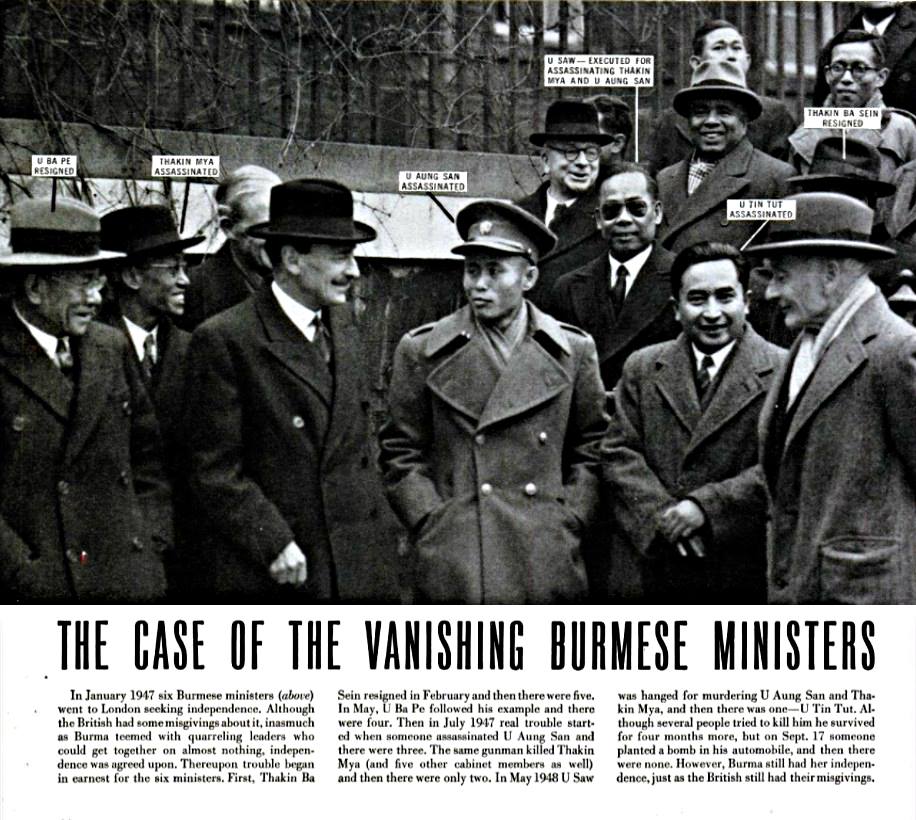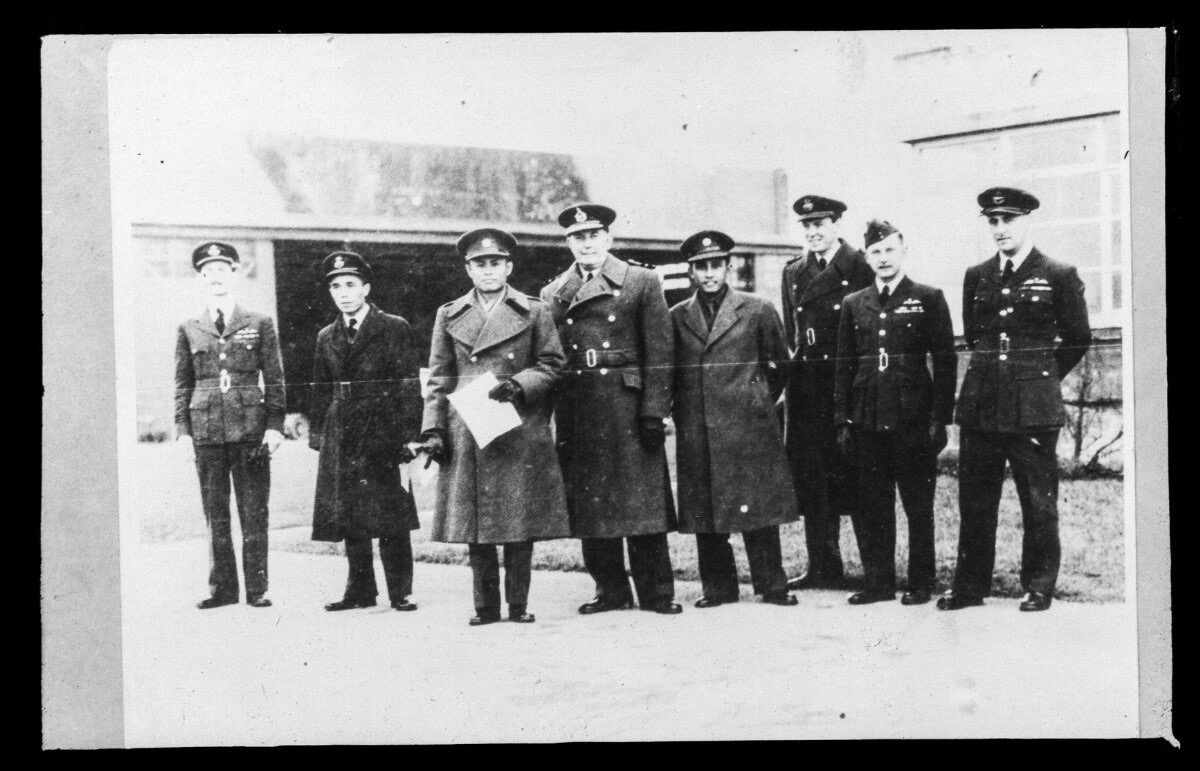


General Aung San with British military officers during his trip to the UK in 1946-47
13 January 1947 - 27 January 1947
Aung San-Attlee Agreement
room United Kingdom
people General Aung San Clement Attlee Lord Frederick Pethick-Lawrence
Between 13 and 27 January 1947 discussions took place in London between the British government of Prime Minister Clement Attlee and the visiting Burmese delegation led by General Aung San. These discussions led to the Aung San - Attlee Agreement.
The Agreement stated as the "common objective" of its signatories "a free and independent Burma whether within or without the British Commonwealth Nations”. It called for elections to a Constituent Assembly "as soon as possible", and laid out many and various transitional provisions.
The Labour government of Clement Attlee that had come into office in 1946 was favourable to both Indian and Burmese independence. What was unclear was exactly when this should happen and what the transitional arrangements should be. By November 1946, the Attlee government decided to grant Burma quick independence since Burma would soon lose its strategic value on the empire’s eastern flank with the independence of India on the horizon.
Furthermore, future profits were more likely to be made in Malaya, Singapore, and Hong Kong than in Burma's war-ruined economy. Local nationalist sentiment was also fast rising. Independence for Burma would mean one less responsibility for the United Kingdom at a time of major responsibilities elsewhere, including in India, Palestine, and at home. The original plan to rebuild the Burmese economy and stay for at least another ten years (as in Malaya and Singapore) was replaced with this plan for early independence.
The only question left for the British was what to do with the "Frontier Areas" (essentially the Chin, Kachin and Karen hills and the Shan, Wa, and Karenni states). Promises had been made during the war (in particular to the Karen and Kachin who had fought with the Allies against the Japanese) and many on the British side were not keen on forcing the Frontier Areas to join an independent Burma. Others in London feared a communist take over of Burma and did not want to leave a Burma that was divided.
The result was a halfway house: the agreement stated that there should be "the early unification of the Frontier Areas and Ministerial Burma" (e.g. Burma proper) but "with the free consent of the inhabitants of those areas". The Panglong conference and the Frontier Enquiry Commission would soon follow.
The delegation was led by General Aung San and included both Anti-Fascist People's Freedom League (AFPFL) and non-AFPFL members of the Governor's Executive Council. Veteran politicians Thakin Ba Sein (founder of the nationalist Dobama "We Burman" association) and U Saw (Prime Minister 1940-42) refused to sign the agreement and denounced General Aung San on return to Rangoon.
Within 18 months of the Aung San-Attlee Agreement, General Aung San and Thakin Mya had been assasinated, U Saw would be hanged, U Tin Tut would be killed by a car bomb, and Thakin Than Tun (Aung San's brother-in-law) was leading a communist insurgency. U Ba Pe (a London signatory and founder of the Young Men's Buddhist Association, YMBA) would later be arrested for high treason. Within just a month of the agreement Karen leaders, led by Saw Ba U Gyi, formed the Karen National Union, and would soon be in rebellion as well.
Intense and usually violent factionalism has been a big part of the Burmese political scene since the birth of modern politics in Burma a hundred years ago.
The first image was a well-known photograph, showing General Aung San with Lord Frederick Pethick-Lawrence, Secretary of State for India and Burma. The second image is a spread in LIFE magazine, 11 October 1948. The last image shows General Aung San meeting British military officers during his trip to London; General Aung San, just shy of his 32nd birthday, had deeply impressed his British interlocutors, who now addressed him as "Excellency".